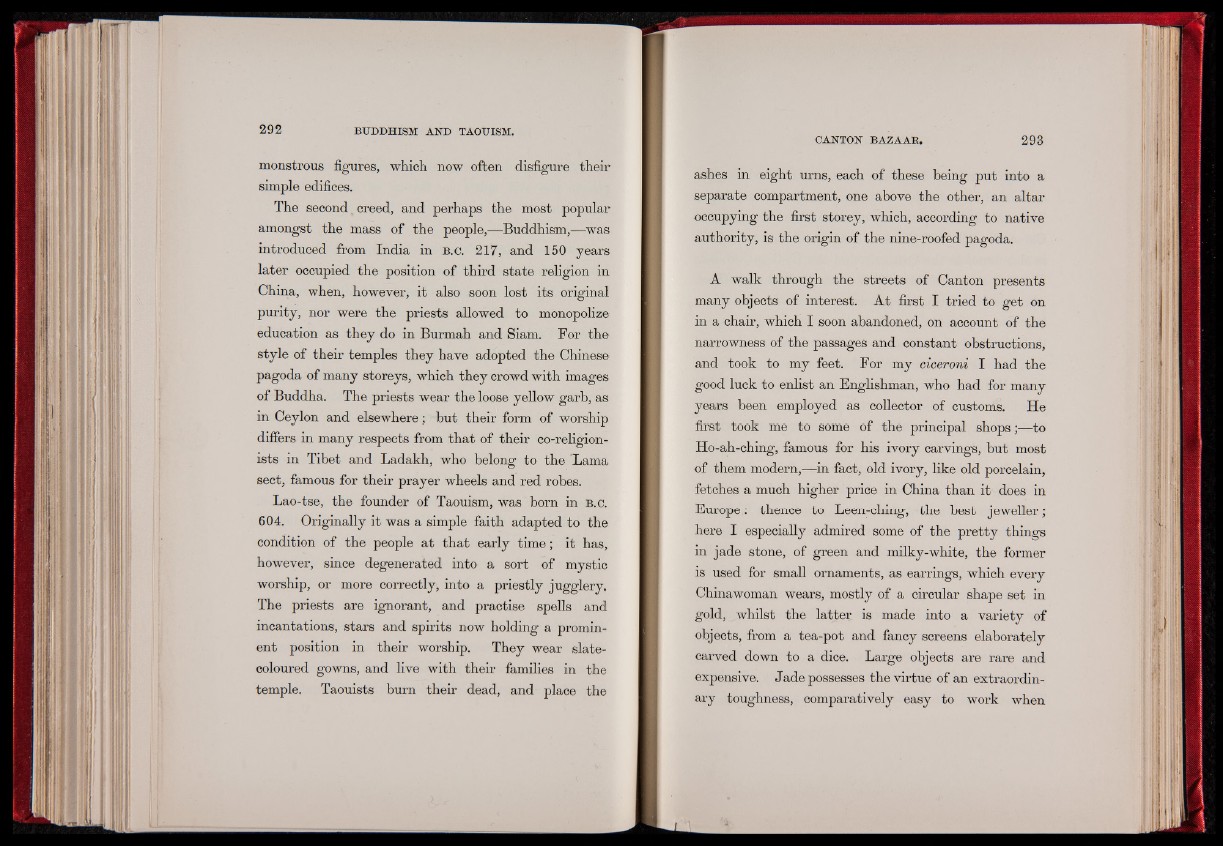
monstrous figures, which now often disfigure their
simple edifices.
The second I creed, and perhaps the most popular
amongst the mass of the people,—-Buddhism,—was
introduced from India in B.C. 217, and 150 years
later occupied the position of third state religion in
China, when, however, it also soon lost its original
purity, nor were the priests allowed to monopolize
education as they do in Burmah and Siam. For the
style of their temples they have adopted the Chinese
pagoda of many storeys, which they crowd with images
of Buddha. The priests wear the loose yellow garb, as
in Ceylon and elsewhere; but their form of worship
differs in many respects from that of their co-religionists
in Tibet and Ladakh, who belong to the Lama
sect, famous for their prayer wheels and red robes.
Lao-tse, the founder of Taouism, was born in B.C.
604. Originally it was a simple faith adapted to the
condition of the people at that early time; it has,
however, since degenerated into a sort of mystic
worship, or more correctly, into a priestly jugglery.
The priests are ignorant, and practise spells and
incantations, stars and spirits now holding a prominent
position in their worship. They wear slate-
coloured gowns, and live with their families in the
temple. Taouists burn their dead, and place the
ashes in eight urns, each of these being put into a
separate compartment, one above the other, an altar
occupying the first storey, which, according to native
authority, is the origin of the nine-roofed pagoda.
A walk through the streets of Canton presents
many objects of interest. At first I tried to get on
in a chair, which I soon abandoned, on account of the
narrowness of the passages and constant obstructions,
and took to my feet. For my ciceroni I had the
good luck to enlist an Englishman, who had for m a n y
years been employed as collector of customs. He
first took me to some of the principal shops;—to
Ho-ah-ching, famous for his ivory carvings, but most
of them modern,—in fact, old ivory, like old porcelain,
fetches a much higher price in China than it does in
Europe: thence to Leen-ching, the best jeweller;
here I especially admired some of the pretty things
in jade stone, of green and milky-white, the former
is used for small ornaments, as earrings, which every
Chinawoman wears, mostly of a circular shape set in
gold, whilst the latter is made into a variety of
objects, from a tea-pot and fancy screens elaborately
carved down to a dice. Large objects are rare and
expensive. Jade possesses the virtue of an extraordinary
toughness, comparatively easy to work when